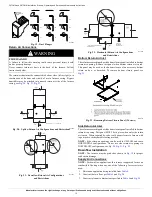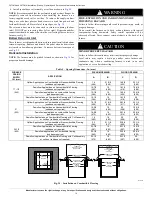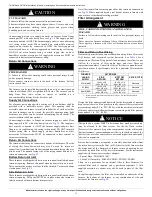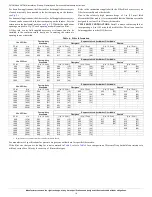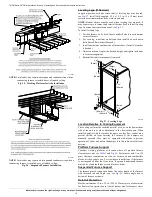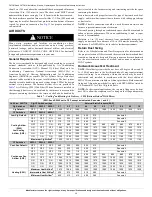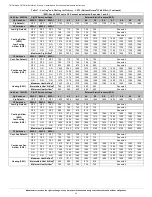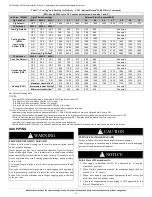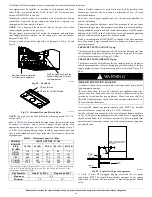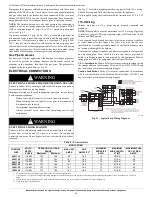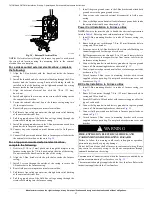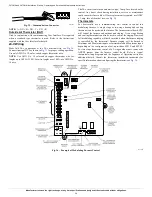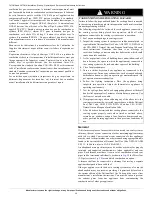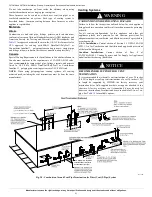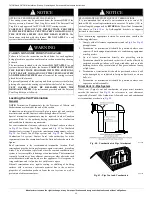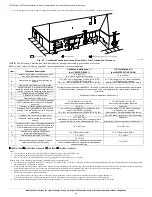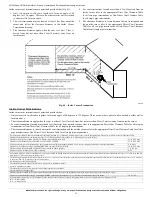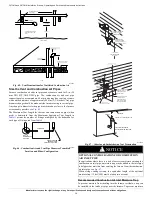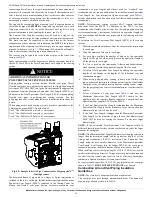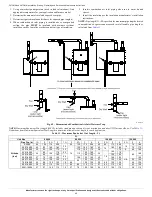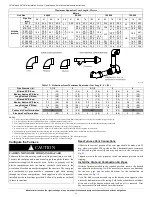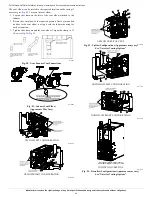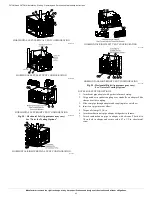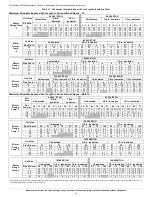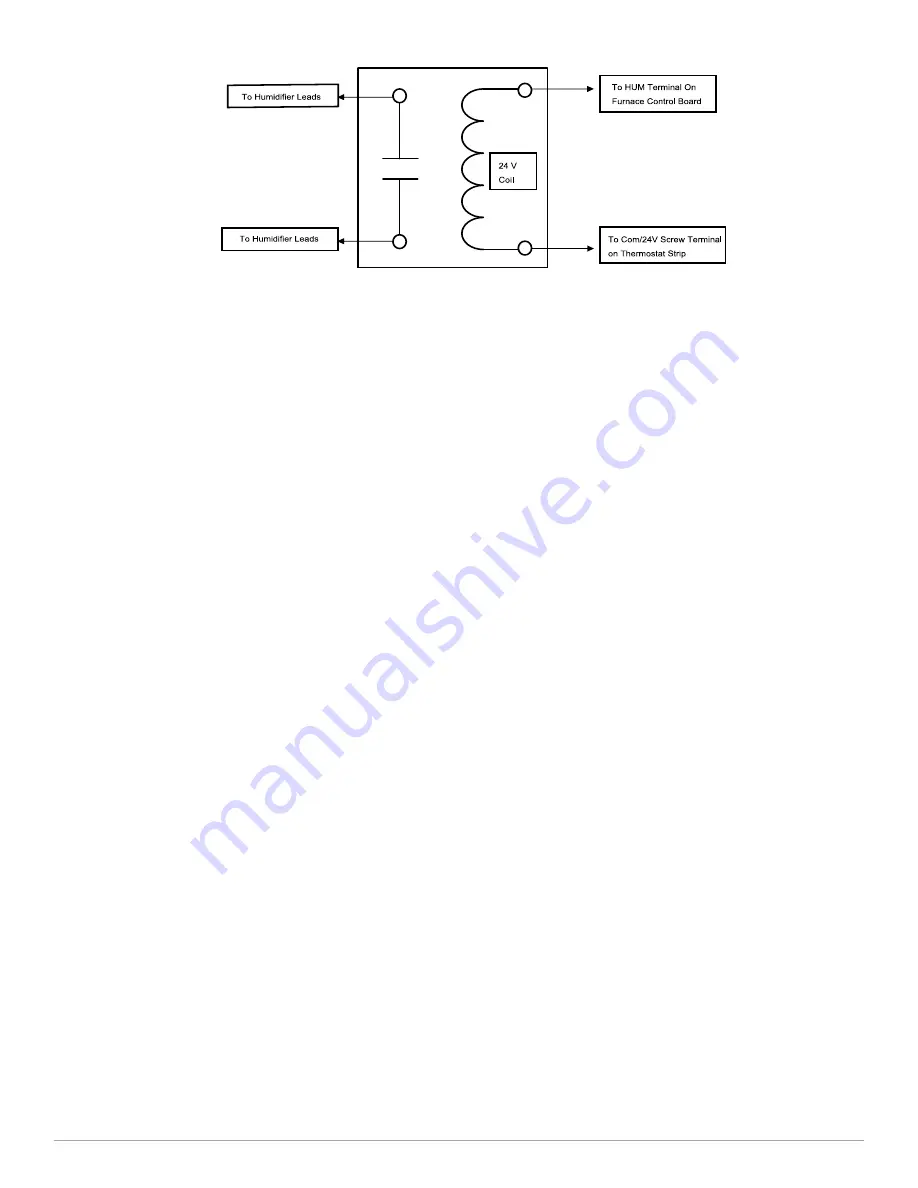
F97CMN and G97CMN: Installation, Start-up, Operating and Service and Maintenance Instructions
Manufacturer reserves the right to change, at any time, specifications and designs without notice and without obligations.
29
A11157
Fig. 37 – Field-supplied Isolation Relay for Humidifiers with Internal Power Supply
Accessories
.)
1. Electronic Air Cleaner (EAC)
Connect an accessory Electronic Air Cleaner (if used) using 1/4-in.
female quick connect terminals to the two male 1/4-in.
quick-connect terminals on the control board marked EAC-1 and
EAC-2. The terminals are rated for 115VAC, 1.0 amps maximum
and are energized during blower motor operation.
2. Humidifier (HUM)
The HUM terminal is a 24 VAC output, energized when the blower
is operating during a call for heat.
Connect an accessory 24 VAC, 0.5 amp. maximum humidifier (if
used) to the
¼
-in. male quick-connect HUM terminal and
COM-24V screw terminal on the control board thermostat strip.
NOTE:
If the humidifier has its own 24 VAC power supply, an isolation
relay may be required. Connect the 24 VAC coil of the isolation relay to
the HUM and COM/24V screw terminal on the control board thermostat
strip, see
3. Communication Connector (communication connection)
This connection is used when the furnace is controlled by an
optional communicating User Interface instead of a standard
thermostat. The communication plug is supplied with the User
Interface. Refer to the instructions supplied with the User Interface
.
4. Outside Air Thermistor (OAT)
The OAT connection is used in conjunction with communicating
User Interface. It is not required when the furnace is controlled by a
standard type thermostat. Refer to the instructions supplied with the
User Interface for complete details.
Alternate Power Supplies
This furnace is designed to operate on utility generated power which has
a smooth sinusoidal waveform. If the furnace is to be operated on a
generator or other alternate power supply, the alternate power supply
must produce a smooth sinusoidal waveform for compatibility with the
furnace electronics. The alternate power supply must generate the same
voltage, phase, and frequency (Hz) as shown in
or the furnace
rating plate.
Power from an alternate power supply that
is non-sinusoidal may
damage the furnace electronics
or cause erratic operation.
Contact the alternate power supply manufacturer for specifications and
details.
VENTING
NOTE:
Planning for the venting system should be done in conjunction
with planning for the ductwork, drainage, and furnace accessories, such
as air cleaners and humidifiers. Begin assembling the venting system
AFTER
the furnace is set in place in the required orientation.
Venting for this furnace shall follow all Local codes for Category IV
venting systems. This furnace is CSA approved for venting with
PVC/ABS DWV venting systems. This furnace is also CSA approved
for venting with M&G DuraVent
R
PolyPro
R
or Centrotherm Innoflue
R
polypropylene venting systems - straight pipe and fittings (elbows,
reducers, increasers, connectors, adapters) only.
NOTE:
THESE INSTRUCTIONS
DO NOT
CONTAIN DETAILED
INSTALLATION INSTRUCTIONS FOR POLYPROPYLENE
VENTING SYSTEMS. Refer to the polypropylene venting system
manufacturer’s installation instructions for the polypropylene venting
system installation.
NOTE:
When using polypropylene venting systems, all venting
materials used, including the vent terminations, must be from the same
manufacturer.
Special Venting Requirements for Installations in
Canada
Installation in Canada must conform to the requirements of CSA B149
code. Vent systems
must
be composed of pipe, fittings, cements, and
primers listed to ULC S636. The special vent fittings, accessory
concentric vent termination kits and accessory external drain trap
available from the furnace manufacturer have been certified to ULC
S636 for use with those Royal Pipe and IPEX PVC vent components
which have been certified to this standard. In Canada, the primer and
cement must be of the same manufacturer as the vent system – GVS-65
Primer (Purple) for Royal Pipe or IPEX System 636, PVC/CPVC
Primer, Purple Violet for Flue Gas Venting and GVS-65 PVC Solvent
Cement for Royal Pipe or IPEX System 636
(1)
t, PVC Cement for Flue
Gas Venting, rated Class IIA, 65 deg C. must be used with this venting
system - do not mix primers and cements from one manufacturer with a
vent system from a different manufacturer. Follow the manufacturer’s
instructions in the use of primer and cement and never use primer or
cement beyond its expiration date.
The safe operation, as defined by ULC S636, of the vent system is based
on following these installation instructions, the vent system
manufacturer’s installation instructions, and proper use of primer and
cement. All fire stop and roof flashing used with this system must be UL
listed material. Acceptability under Canadian standard CAN/CSA B149
is dependent upon full compliance with all installation instructions.
Under this standard, it is recommended that the vent system be checked
once a year by qualified service personnel.
The authority having jurisdiction (gas inspection authority, municipal
building department, fire department, etc.) should be consulted before
installation to determine the need to obtain a permit.
*IPEX System 636™ is a trademark of IPEX Inc.
Consignes spéciales pour l’installation de ventilation au Canada
L’installation faite au Canada doit se conformer aux exigences du code
CSA B149. Ce systême de ventillation
doit
se composer de tuyaux,
raccords, ciments et apprêts conformes au ULC S636. La tuyauterie de

